- 983191003073+
- 989022720020+

Is it possible to produce compost from waste from tree pruning?

Compost is decomposed and relatively stable organic waste as a result of the rotting process, and rotting or composting is the act of rotting and decomposing plant, animal or urban waste, as well as sewage sludge, which is carried out under special conditions and various methods. This practice is perhaps the oldest method of recycling. The organic matter in the mass used for compost is from agricultural waste, food and garbage, which are converted into rich black and white soil through aerobic and anaerobic decomposition, which is used as fertilizer in agriculture. The process of composting is very simple and can be done by experienced people in their homes, farmers in their fields, and industrially. Compost is the result of the biological activity of microorganisms that have the ability to break the large molecules of organic substances. This fertilizer, which is produced from agricultural, household and food waste, is considered one of the best fertilizers for agricultural purposes, and flower and plant producers can also use this fertilizer. The magnesium and phosphate present in this fertilizer cause siltation of agricultural soils and faster absorption of nutrients in the soil. Compost is very rich and used soil that is used as fertilizer in gardens, landscaping, horticulture, and agriculture. Compost is also a natural pesticide for soil. It is very useful in pothole ecosystems for erosion control, land and runoff soil improvement, wetland construction, and as a landfill cover.
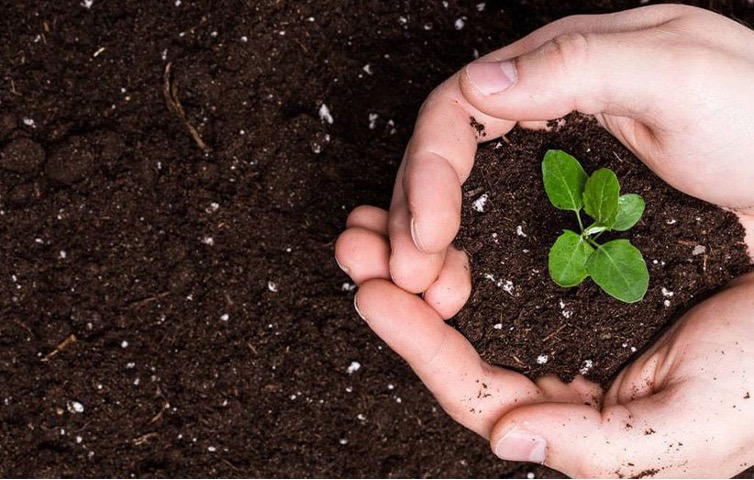
Compost is used in gardening and agriculture as a soil conditioner. Urban experts believe that 70% of Tehran’s waste is garbage and as a result, they can be turned into compost. The least advantage of this work is preventing the production of thousands of cubic meters of leachate and millions of tons of methane gas and polluting a huge part of the environment. Agricultural experts believe that compost is one of the best plant fertilizers and natural soil enhancers and can be a good alternative to commercial fertilizers. The most important advantage of this fertilizer is its cheapness. You can produce it in your home without paying a single Rial. The use of compost improves the soil structure, strengthens the soil content, and makes the soil able to retain water for a longer period of time. Compost increases the fertility of the soil and helps healthy roots grow in the plant. This fertilizer is also used as cover for erosion control, restoration and construction of wetlands. Compost is also mixed with sand and used for land drainage.

The purpose of compost production is to create a uniform food environment, containing the necessary characteristics for the growth and development of mushroom mycelium and free from any competing bacterial and viral factors. Mushroom mycelium is able to grow and develop in different types of plant material and animal manure, which is obtained from the appropriate combination of these types of materials together and passing through the stages of decomposition and fermentation, a homogeneous mixture that is full of insects and microscopic organisms. Many of these organisms directly compete with the mycelium of the fungus to obtain nutrients and prevent its growth. With the production of compost, many of the desirable nutrients of the competing factors are gradually removed, but the nutrients required by the mushroom mycelium are collected in a specific area and over time, the planting bed becomes ready for growing mushrooms.
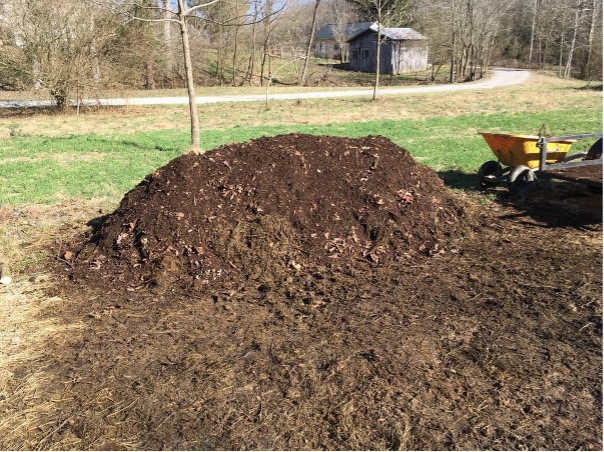
– Compost production process
The first stage: it is called the preparation of compost in the open air and includes the initial stages, including mixing and initial decomposition of raw materials (phase one).
Second stage: It is done in a special indoor environment designed for this purpose (pasteurization room or tunnel). At this stage, the compost obtained from the first stage; With steam or other disinfectants, it is completely pasteurized and ready to be transferred to planting beds (phase two).
Phase one – composting (raw raw materials)
These materials include wheat straw and stubble, barley, oats, rye, rice and sugarcane bagasse. Of these, wheat straw is preferred because it is more flexible than other materials, this feature helps in preparing the compost structure. Oat and barley straw and stubble are softer than wheat and get saturated with water quickly when wet, which ultimately creates anaerobic conditions in their mass. According to these factors and with proper management, it is possible to successfully prepare compost from all types of straw and stubble.
Straw; It contains carbohydrates, cellulose and all the nutrients needed by mushrooms. For example, wheat straw contains 36% cellulose, 25% pentosan and 16% lignin. cellulose and pentosan; Carbohydrates are simple sugars that arise from their decomposition. Such sugars provide the energy required for microbial growth. On the other hand, the lignin present in straw, stubble, or tree wood during the initial stage of composting turns into a substance known as humus lignin complex, rich in nitrogen, which is a source of protein. In general, straw is a material with suitable chemical and structural properties that is used to produce mushroom compost. If horse stable straw is used to produce compost; It is called horse manure [1], it contains 90% straw and 10% horse dung. The quality of this material depends on the amount of urea, feces, and the amount of nitrogen, phosphorus, and potassium elements that are used in it. Since 30-40% of horse feces contain useful microscopic organisms (bacteria) that accelerate the fermentation and composting process; It has made this material superior to other compost raw materials. The required horse manure can generally be obtained from horse racing fields. If sawdust is used under the horses instead of straw, then it should not be considered a raw material, but it should be considered a supplement. If the raw material of the compost consists of horse manure, it is natural compost [2]. ] and if the main and primary material of the compost is straw and stubble or a mixture of straw, stubble and dry fodder and horse manure is not used in its production; It is called synthetic compost [3]. In order to compensate for the lack of phosphorus and potassium in straw and stubble, they always add some chicken manure as a supplement to synthetic composts.
Due to the insufficient nutritional value of straw or horse manure, as well as the low rate of decomposition and fermentation in it, a series of substances called supplements should always be combined with them in the form of a formula. According to the method of Jaldhal [4]; Each of the formulas is prepared and adjusted based on the amount of nitrogen in each component. By using these formulas and observing the specific principles of composting; The optimal ratio is obtained to carry out appropriate microbial decomposition activity, as a result; We will reach the maximum nutritional value.
– supplements Compost production is basically a microbial decomposition process. Microbes are abundantly found in the composite components of compost, and to activate them, it is enough to add some water. To further stimulate the activity of microbes and increase their growth, we can add some food supplement to the raw materials as a provider of protein (nitrogen) and carbon hydrate needs of the population of microbes. As long as there is enough carbon hydrate available to the microbes, they can use almost any nitrogen source to provide the energy they need. Due to the problem of decomposition of cellulose, in principle, straw carbon hydrate cannot be used and it must be provided from another source. This supplement should contain nitrogen and some organic matter to provide the necessary amount of carbon hydrate. In this way, specific amounts of animal manure and animal food powders should be used in the production of compost. In the following, a list of the combined components of compost along with the permitted supplements are grouped and presented according to the percentage of nitrogen in them. The accessibility and cost of each of the materials in the formulas are two important factors in their selection. This list is not definitive and comprehensive, and similar materials can be used as desired (refer to the appendices).
Group 1: All these materials are mineral and produce ammonia gas quickly. These materials are often used to soften straw in synthetic composts. When using, it should be noted that all these materials are combined completely uniformly. if using ammonium sulfate; Three times its volume of calcium carbonate (caco3) (horse manure) should be used to neutralize the environment. This group should not be used in making natural composts.
Group 2: These materials are rich in protein, but due to the high price, they are not consumed much.
Group 3: This group is one of the most widely used materials at the commercial level and there is a favorable ratio of it. Dry chicken manure mixed with sawdust or straw and stubble is common and its method of use is also easy.
Group 4: All these heat-increasing materials are very good, and for this reason, they are recommended for all composts. Its consumption amount is 12.5 kilos per ton of dry ingredients.
Group 5: These materials are used only in areas where there are no horses or chickens.
Group 6: Fodder is very useful for increasing the initial temperature (stimulation of microbial activity) of synthetic composts and it contains a lot of carbon hydrate, which helps a lot in increasing the microbial population. These materials can be used in the amount of 20% of the dry matter of the raw materials of compost.
– Compost preparation methods A) Manual method:
This method is usually used to prepare organic fertilizer in sparsely populated areas such as villages. And since the best method of waste disposal in rural areas is making fertilizer from waste. It can be of interest to many villagers, which itself can be divided in several ways. which are briefly: Bengalo method: In this method, fertilization is done anaerobically. Pits are dug with a depth of 90 cm, a width of 1.5-2.5 and a length of 10-4.5 meters. The minimum distance of these pits from the last residential area of the place should not be less than 800 meters. The process of fertilization is that, first, a layer of waste about 15 cm thick is spread on the bottom of the pit and feces are poured on this layer with a thickness of 5 cm. Then they alternately add 15 cm thick layers of garbage and 5 cm of human manure to reach the top of the pit. The last (top) layer should be 25 cm thick of waste. Then they pour the cut Khag on top of the garbage with a thickness of 45-60 cm and cover it completely. As a result of the action of bacteria, considerable heat is created in the compost mass within a week, which lasts for 2 to 3 weeks, which causes the decomposition of materials and destroys all pathogenic and parasitic agents. At the end of 4 to 6 months, the decomposition work is completed. The resulting fertilizer is a substance that is completely decomposed, odorless, and harmless. And its childhood value is very suitable for agricultural land. It is not recommended to use this method for populations over 100,000 people.
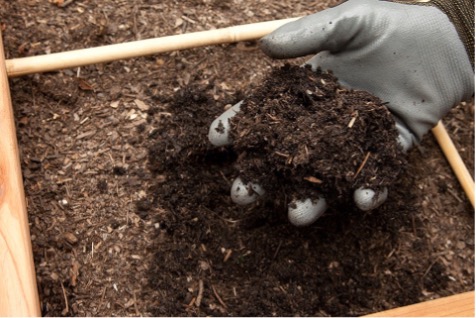
– Pit method: This method is usually used for family waste disposal. So that holes are usually dug with a depth of 1 meter. Then, food waste, animal waste and tree leaves are poured into these holes and at the end of each day they cover it with soil. The number of these holes should not be less than two, because after filling and closing one of them, the other can be used. Within 5 to 6 months, the waste turns into fertilizer. which is very suitable for use in agriculture as fertilizer. This method is effective and relatively simple and practical in rural communities.
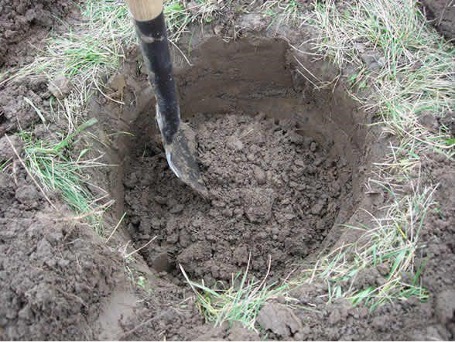
– Pit method: This method is usually used for family waste disposal. So that holes are usually dug with a depth of 1 meter. Then, food waste, animal waste and tree leaves are poured into these holes and at the end of each day they cover it with soil. The number of these holes should not be less than two, because after filling and closing one of them, the other can be used. Within 5 to 6 months, the waste turns into fertilizer. which is very suitable for use in agriculture as fertilizer. This method is effective and relatively simple and practical in rural communities.
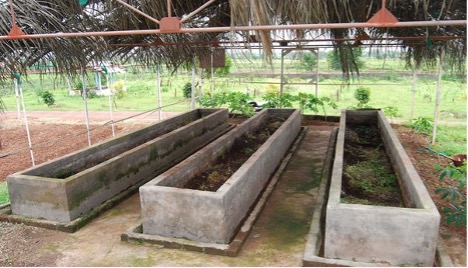
– Surface method: In this method, each pile has a surface of 2.5 square meters and a height of approximately 1.5 meters. The roads separating each area should be 5 to 6 meters wide to allow easy passage of vehicles to all points. In the summer season, the weight of piles is usually considered 630 to 820 kg and in winter 1500 to 1800 kg (larger piles produce more heat). When the pile returns, the two piles can become one larger pile at the new location. And in the second return, the initial four piles will turn into two piles and then into one main pile. The quality of the resulting fertilizer can also be known through experiments.

One of these methods is the use of iodine. The test steps are as follows:
- a) Mix a sample of the resulting fertilizer with hydrochloric acid.
- b) Pass the resulting mixture through filter paper and add two drops of iodine to the filtered liquid.
- c) If the solution is yellow and a little precipitated, it means that the fertilization process is completed.
- d) If the solution is blue in color and creates more sediment, it is the reason for not completing the fertilization process.
- b) Fertilization by mechanical method: In this method, preparation of fertilizer in large fertilizer factories is done mechanically. This method is usually used in big cities. The operation process of large compost factories is summarized as follows:
1-Transportation operations
2- Garbage acceptance
3-Separation of non-compostable materials
4- Crushing
5-Digestive system
6- Screening and separation of fine and coarse grains
7-Packaging and distribution in the market
During the decomposition of organic materials inside the digester towers, the following should be considered:
- A) Carbon to nitrogen ratio (C/N): This ratio is between 12 and 20 in the mature compost product.
- B) Humidity: The humidity required to prepare compost is 50 to 60 percent.
- c) Temperature: The temperature required to destroy pathogenic microbes and parasites is about 60 to 70 degrees Celsius.
- d) Aeration: Usually, the aeration should be enough so that the system does not become anaerobic.
The pH in ripe compost is about 8.
– Types and characteristics of compost:
1-Raw compost: waste materials that are not compostable and have been separated and crushed, but have not gone through the stabilization process.
2-Fresh compost: materials under composting, which are in the initial stages of biochemical decomposition and about 20% of them have been stabilized.
3-Ripe compost: includes complete compost and products without pathogenic agents.
4- Special compost: complete compost to which some chemical fertilizer has been added to meet the needs of the plant.
Advantages of compost:
– Increasing the porosity of the soil and thus helping the development of plant roots
Soil conditioning
– Increasing water retention capacity
– Reducing soil erosion
– Increasing soil ion exchange capacity
– Supplying nutrients and mineral elements
– Beneficial effect on the activity of microorganisms
– Helping to absorb heat in the soil due to its dark color
– Reducing soil adhesion
Disadvantages of compost:
– In the mechanized mode (compost factory), the initial investment is high.
– Disposing of non-compostable materials should be done separately.
– In some cases, the product does not have a reliable sales market.
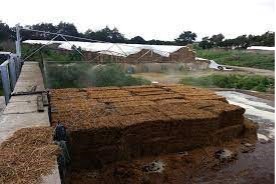
Biogas: In general, biogas is obtained as a result of anaerobic fermentation of organic materials. Biological waste materials, especially animal waste, household waste, roots and stems of plants are vaporized, decomposed and produce flammable gas in a closed tank. This gas, known as biogas, is a mixture of 55-65% methane gas and 35-45% carbon dioxide and a small percentage of nitrogen, hydrogen, oxygen and hydrogen sulfide. Methane, which is the source of energy and flammability of biogas, is the same gas that flows in the gas supply networks of the city and exists naturally in underground sources. Biogas is colorless and easily flammable. Each cubic meter of it produces energy equivalent to 0.6 cubic meters of natural gas. All biological organic materials have the ability to ferment and produce biogas. But animal and human excreta are more suitable for this operation. Therefore, in places where it is possible to keep animals and livestock, such as villages or even livestock farms and chicken farms, some of the required energy can be provided with the help of fermentation of animal and human waste. Fermentation is done in tanks called digester or fermenter, and on average, about 150 liters of biogas is produced from each cubic meter of useful volume of the digestion tank. The stopping time of biological materials in the digestion tank, or in other words, the time required to complete the above reaction, varies from 30 to 90 days depending on the ambient temperature. In recent years, the importance and development of biogas in the world has been greatly noticed, so that the number of these devices in China from 1920 to 1972 was only 1300, and after that until 1985, it was estimated that there were more than 7 million devices. which meet the energy needs of 50 million villagers. Also, in this country, more than 400 large and small generators use biogas energy for domestic and industrial purposes. There are more than 100,000 biogas plants in India. It is also used in European countries such as Denmark, Belgium, France and other countries. In America, more than 1000 biogas units are working in an industrial and developed way, so that 10% of the total energy consumed in this country is supplied from the biogas system. The comparison of the chemical properties of vermicompost and peat shows higher levels of nitrogen, phosphorus, potassium, calcium and magnesium in vermicompost. Vermicompost is in better conditions than peat. is located, but this substance was not in favorable conditions in terms of EC, and the use of its higher amounts instead of peat can limit the growth.
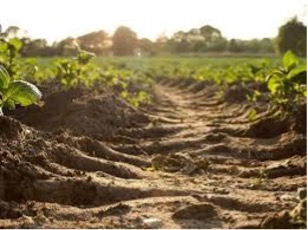
Map
[neshan-map id=”1″]
Address
Isfahan, Golpaygan, Ayatollah Mahmoudi Blvd., in front of Laleh Park, Fanab Sanat Golpa Company
About Company
Fenab Sanat company produces all kinds of wood chipping machines and agricultural tools, which are sold in different models. It also has several patents and is one of the largest producers and exporters of agricultural tools in Iran.